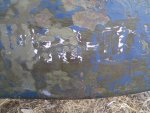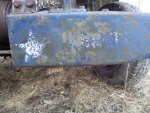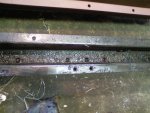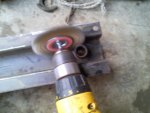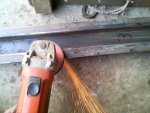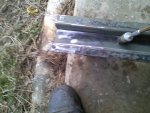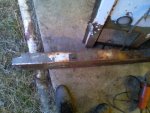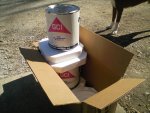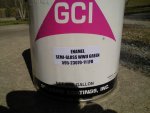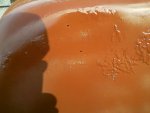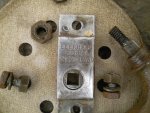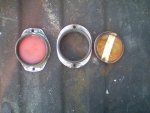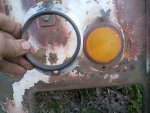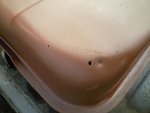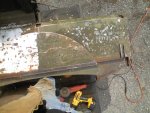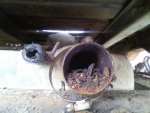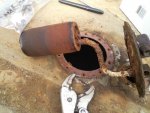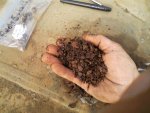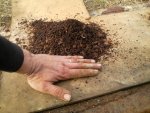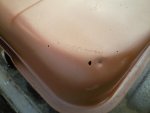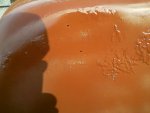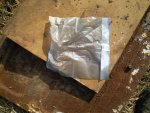Words of caution are warranted .. but like anything a little common sense goes a long ways .. Here's my project process:
You will need to pull the sending unit and the pick up unit from the tank .. Cut the Acid with a little water (I use a stronger mixture as my tank was nasty) ..USE GOOD VENTILATION FOR ALL OF THESE STEPS!!! Pour it in and let it set a while and work on the metal .. it will smell and there are going be some fumes.. I used saw horses and a piece of ply wood for a table with a couple of wood blocks to support the tank when t was on its sides etc, (What ever you have laying around in the shop should work) .. you will need to rotate the tank so that the acid bath can get at the sides ... For the top of the tank, I rolled my tank over so that the acid/water mixture went was right to the edge of the sender unit and pick up unit holes or you could plug them I suppose.... I plugged up the fill pipe and return pipe during the acid bath ..
Dump your acid (Use caution ... proper disposal instruction will be on the container) Rinse the tank out after the acid bath with water and let it drain. Next step, use the MEK to absorb the water and rinse the tank .. Again you'll have to rotate the tank .. Lots of muscle work involved in the process but well worth the effort .. I always have more time than money myself .. Plus I trust my own work

Gas tank sealer will be next step !... Pour in your sealer (2 quarts will work well) and rotate the tank to coat the interior .. use caution so that you get the side and the baffles coated during the process. I plugged my fill pipe and return line during the coating but removed the plug after coating and wiped out the little bit of sealer that had puddled in the filler neck after each coat.
I used my gas tank drain hole to drain the sealer into their original containers for reuse for the subsequent coats that I did. I coated my tank 4 times .. did a coat each day and used a small fan on low setting to circulate air thru the tank between coats to help with the drying process after draining the sealer .. You'll know that the tank has dried as the sealer smell inside the tank is almost gone .. don't let the sealer puddle inside the tank .. that can be the tricky part .. and then let the tank sit and dry after your final coat before installing your tank goodies .. the results will be a glass smooth sealed tank interior.
If you don't want the hassle, some commercial radiator shops offer sealing services for tanks .. it will be a bit spendy but there is that possibility. Truck Stops are a good source for info on those vendors



